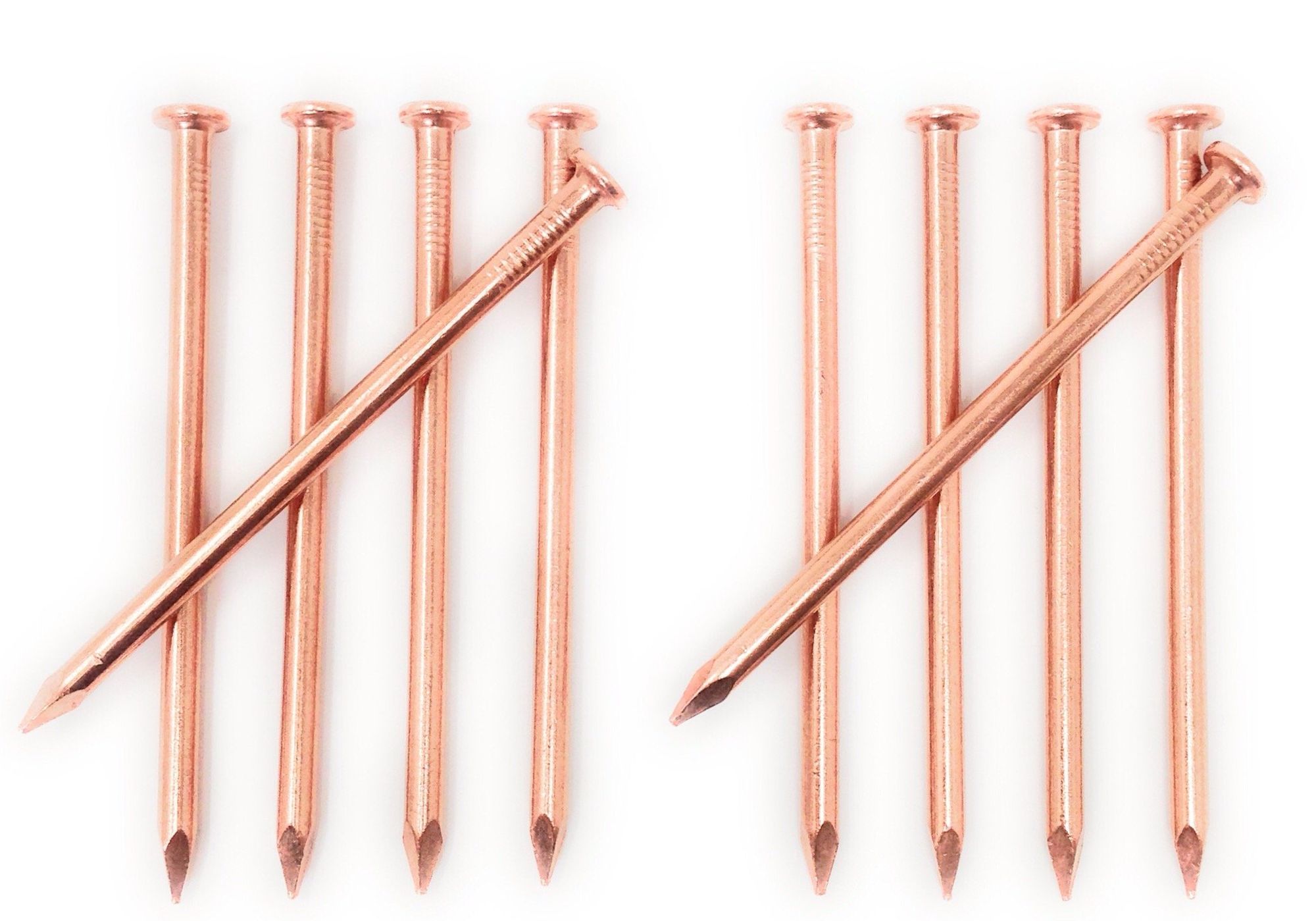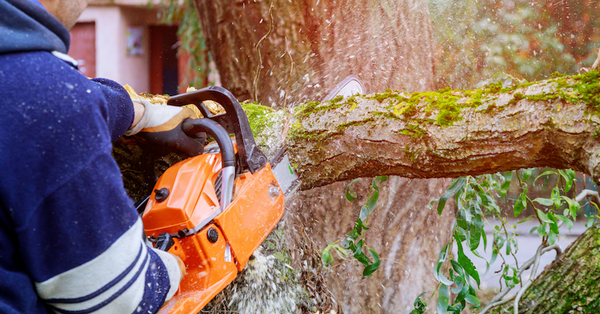You're correct to wonder whether it's a myth or if copper nails can be used to harm trees.
Theoretically, it is a straightforward, cost-effective idea, so I'm not surprised you're considering it. Therefore, to eliminate your suffering, let me tell you from experience, it depends.
It mainly relies on several variables, including the size and age of your issue tree. What kind and how many copper nails are used? Finally, their intended purpose, precisely exactly how will you fasten them to the tree?
I've put up a thorough tutorial on destroying trees with nails and will share my knowledge from cutting down trees.
Can Copper Nails Be Used to Kill a Tree?
Yes, using copper nails to destroy tiny trees may be successful. The likelihood of this strategy succeeding decreases with increasing tree size.
On dwarf trees, young trees, and saplings with deep roots, this strategy has proven effective for me. However, the technique entails chopping the tree down to a stump and inserting many 5-inch nails vertically into the end of the stump that has just been newly cut.
How Can Copper Nails Kill Trees?
Copper will oxidize after it is pounded into a tree trunk or roots, releasing copper sulfate, a poison. Copper sulfate hinders the development of new cells and obstructs nutrition channels, which causes the tree to perish. Large plants need more nails since they demand greater dosages. Therefore, tiny to medium-sized trees benefit the most from this strategy.
Solid, pure copper nails are required to make an appropriate amount of copper sulfate; coated steel nails will not work.
Purdue University Forestry Dept. states pure copper sulfate solutions are dangerous to nearby animals and streams. Utilizing copper in the shape of a nail delivers a tiny, precise dose of copper to the cambium cell layer, the center of the tree in charge of carrying nutrients and liquids.
Oxidation
When exposed to water and air, copper oxidizes and transforms into various copper forms. If you've ever seen green pennies or the Statue of Liberty, you may be acquainted with oxidized copper.
Over time, copper will oxidize into copper sulfate, which may be hazardous to humans, bacteria, plants, algae, fungi, and fungi. But physical contact with it is not dangerous to individuals; only ingestion or contact with the eyes is.
Stunts Cell Growth
In addition to being toxic to the tree, copper sulfate also actively damages tree cells. As it attaches to and kills cells, the tree can't keep up with the harm and grow bigger.
Leaf Damage
The dangerous copper will keep moving through the tree and finally start to harm the leaves. They will become yellow and white, and the absence of chlorophyll will prevent the tree from absorbing nutrients from sunshine.
Root Damage
The roots close to the tree's base are ideal for the nails. The roots suffer immediate physical harm, exposing the tree to copper poisoning. It also leaves the tree with an exposed wound susceptible to illnesses.
The Step-by-Step Guide to Killing a Tree with Copper Nails
This procedure is about as fast, easy, and clean as you can get once you accept its limitations and the need for the nails to be applied to a cut stump. These 4 easy steps will guide you through the process.
Step 1: Insert Nails Near the Base of the Tree
I've discovered that driving the nails into the tree close to the root works best. Going the pins more profound into the tree and the seeds is beneficial.
A nail's diameter and length should be as big as possible for maximum harm. There is no set norm, although the therapy will be more successful the deeper the nail penetrates.
If you have a little tree that has to be removed, hammer the nails vertically into the stump, as illustrated below. I drove the pins into the stump with a hammer. Even a tree stump like this can start to sprout suckers or new shoots if left untreated, and it will develop quicker than expected.
Step 2: Add more nails to create a ring around the tree's bark.
Continue to arrange the nails in a ring at a distance of half an inch. Maximum harm and increased copper ratios are produced when close by. Counting the nails you drive in can help determine how many you need to remove later.
A constant layer of damage with lots of copper is ensured by wrapping the nails around the whole bottom ring of the tree. It's essential for large trees.
Step 3: Look for new shoots
The waiting game has begun. The duration might range from one to six months. Here, prevention is the key to success. Our goal is to prevent the tree from regrowing. So keep an eye on the tree and remove any new growth during the first month. I anticipate the surviving stump will stop producing new, robust-looking shoots within a month.
Step 4: Take Out the Nails or Dig Out the Stump
Finally, remove the remaining tree roots and stump by digging. I decided to let the stumps decay since they were in moist sections of the garden in my backyard. However, after the stump was rotted, I did remove the nails to reduce the possibility that copper sulfate may negatively impact the other plants.
How Long Does it Take?
The size and condition of the tree before placing the nails will determine if you can kill it with a copper nail.
Small or sickly trees often take 4 to 8 weeks to pass away. However, more enormous trees or trees in more dry environments may take up to six months.
Will Copper Nails Kill Large Trees?
Depending on what you define as being enormous, yes. Copper nails will effectively stop the already-cut tree from sprouting new branches. My own experience indicates that trees with a trunk diameter of more than 6 inches are unlikely to perish due to copper sulfate poisoning brought on by the usage of nails.
It is possible to secure the base of medium-sized trees with dozens of nails, but the procedure could be more efficient and reliable. Getting rid of old nails and getting new ones every few months may increase your chances of success.
I advise attempting the Hack and Squirt technique, which is described here, for more giant trees. In short, this entails using an ax to slice downward incisions into the tree trunk. Then, you may use a potent herbicide and carefully drip it into the wounds.
The advantage of this approach is that live, standing trees may be used without having to be felled. Furthermore, you can destroy big trees with a high degree of confidence.
Is It Safe To Use Copper Nails To Kill A Tree?
Based on the meager quantities of copper sulfate generated, no absolute safety issues are associated with utilizing this method. Additionally, since the chemical is contained inside the tree stump's structure, no direct harm to nearby plants or animals exists.
When copper sulfate comes into touch with human skin, it poses no health risks to them. Take caution if you have kids prone to touching the region and putting their fingers in their mouths since oral consumption of concentrated doses poses a danger.
The National Pesticide Centre claims that copper sulfate might irritate your eyes if it comes in touch with them. But utilizing copper nails and a liquid concentration are two entirely different things. It is improbable that any copper sulfate residue left behind by the pins would be transported into contact with people at any attention.
Other Techniques For Eliminating Trees, Stumps, and Roots
It is straightforward and inexpensive to destroy a tree using nails. Without the use of chemical concentrates or herbicides, it is also clean.
You shouldn't, however, wait up to six months to check whether your 8-inch-tall tree survives despite your best efforts. It is urgent to remove certain trees since they may already be causing harm.
No matter how you decide, there are many different methods to destroy trees. From additional organic techniques to herbicides of commercial grade. Here are several possibilities:
Tree girdling is the first possibility. This technique removes the bark entirely in a circle around the tree, and the timber is chopped. It starves the tree's roots and prevents it from growing leaves. You may also pour or inject herbicide into the grooves to hasten the process.
If your tree is tiny to medium-sized, you may chop it down and cover the stump and roots with a substantial piece of black plastic or tarp. Simple as it seems, the goal is to prevent residual tree roots or stumps from receiving sunlight. Even though it's a tedious process, it can be the best option in locations where having a yard covered with visibly black plastic isn't a huge thing.
To chop down and remove the garbage from a huge tree, you will likely need to contact expert help. After that, the remaining stump may be removed using a stump grinder and the saw-and-burn technique, detailed in this article on how to destroy a tree stump.
Another efficient method is to cover a newly cut tree stump with a thick layer of salt. Drill holes into the stump and the nearby tree roots vertically downward. Wrap the area in plastic after sprinkling a few pounds of salt over it to keep it from being washed away by rain. To be effective, the salt must still have a thick salt crust and some moisture to permeate the tree trunk.
Conclusion: Killing Trees with Copper Nails
Using copper nails to kill tree stumps has been a topic of debate, with varying degrees of success reported. While it's been used traditionally as a tree killing method, it's not always efficient, particularly for large, resilient species like maple trees. On the other hand, for small trees or unwanted trees, embedding copper nails may prove effective over time as the copper toxicity slowly spreads, leading to the tree's death.
When considering killing tree stumps, remember that patience is essential. Unlike chemical treatments, the impact of copper nails is gradual and may take months or even years to fully manifest. In this method, copper wire can be used in conjunction with nails to maximize copper exposure. Be sure to use enough copper nails to effectively encircle the trunk, thus improving the chances of a dead tree in the future.
So long as you apply the nails, as I have indicated, you may destroy young or tiny trees with the copper nail approach. That much is certain: it is not a myth. To guarantee success, though, you'll need to be patient and cut down the tree so that you can nail down the stump.



